Garmin has begun rolling out wrist temperature tracking to watches with the newer Garmin ELEVATE V5 optical heart rate sensor in them, which includes the Garmin Epix Pro, Fenix 7 Pro, Tactix 7 AMOLED, and Venu 3 series. Those are the same watches that recently got ECG capabilities via this new sensor hardware (ELEVATE V5 sensors).
In addition, this update is actually part of the much broader Garmin Q4 2023 wearables update, which brings a slate of new features to most of their newest Outdoor & Fitness watches, including the things listed on the following chart from Garmin:
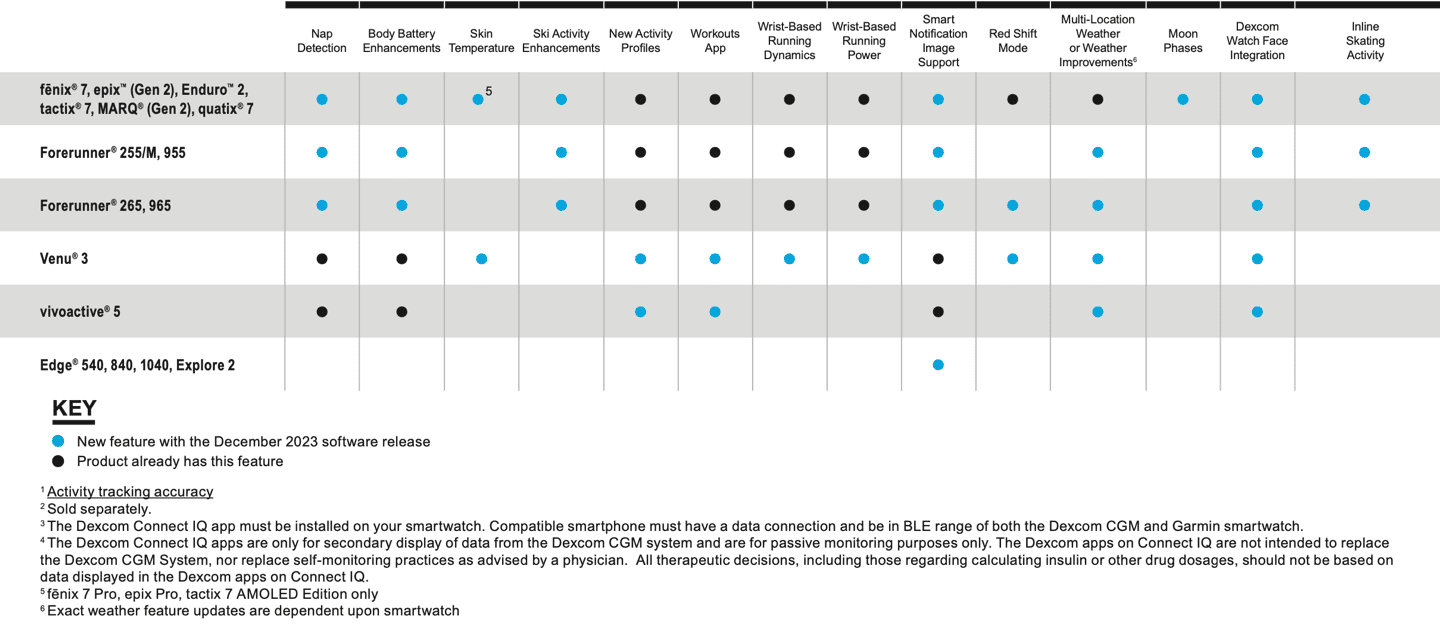
As you can see, it’s a bit of an eye-chart trying to figure out which is which, but things are slowly getting more cohesive in the Garmin world, at least in terms of software update timing/features coordination – all part of that new quarterly update program introduced about 18 months ago.
The big ticket items are:
– Running power & Running Dynamics to Venu 3
– Nap tracking to everyone that didn’t already have it (within the products listed)
– New ‘Workouts’ app that consolidates planned workouts into one spot
– Red Shift gets added to Forerunner 265/965/Venu 3 (used to be Epix only)
– Dexcom CGM to everyone listed above
– Images on watch in text messages on Android (Apple’s iOS doesn’t permit 3rd parties to do this)
The noted ‘Body battery enhancements’ are essentially now showing the contributing factors (e.g. workouts, naps, sleep, etc…), which rolled out on the Venu 3/Vivoactive 5.
Skin Temperature Feature:
All of the above things in that chart have been in public beta now for about a month or so, however, skin/wrist temperature is actually the singular one that wasn’t in public beta.
Well, at least not entirely. See, back when Garmin announced this Venu 3/3S public beta update a month ago, they accidentally included the skin/wrist temperature line in the release notes on the forum for a day or so. However, while the firmware did include that feature, the corresponding public smartphone apps did not. Thus, you couldn’t see the wrist temperature data even if you’d updated your watch with the latest firmware. However, behind the scenes, it was quietly collecting it nonetheless. Thus today with the latest update, you’ll likely see all that wrist temperature data.
So, let’s quickly dive into it. First, this is only available on Garmin’s ELEVATE V5 watches – those are the ones with the newer optical sensor hardware that looks like this on the underside of your watch:
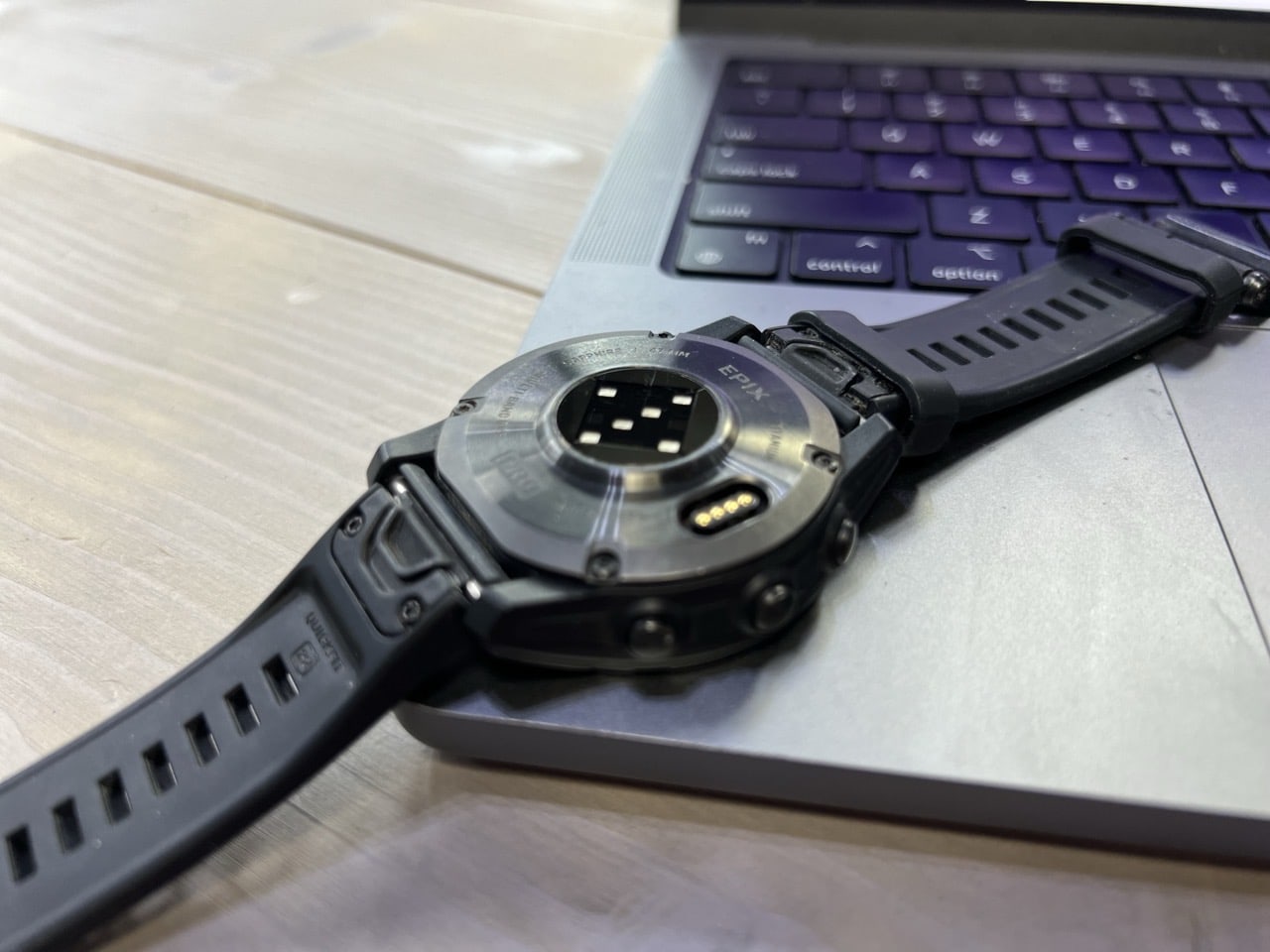
Again, specifically that’s the Garmin Epix Pro, Fenix 7 Pro, Tactix 7 AMOLED, and Venu 3 series. Quirkily, it does not include the also-brand new MARQ Carbon or Descent Descent Mk3 watches, as those were based on the older ELEVATE V4 sensors.
Next, this data is only collected during sleep. Thus, you’ll need to sleep. And specifically, you’ll need to sleep for 3 nights to create a baseline. This is the same as what Apple does. More specifically, that baseline is specific to the individual watch. If you switch from a Venu 3 to an Epix Pro, then the baseline starts over again.
Once you’ve reached your baseline, you’ll start seeing skin temperature variations each night in your sleep stats. Like virtually every other wearable, Garmin isn’t showing the exact skin/wrist temperature, instead, just the deviation each night from your established baseline. You can also trend this data over various time periods.
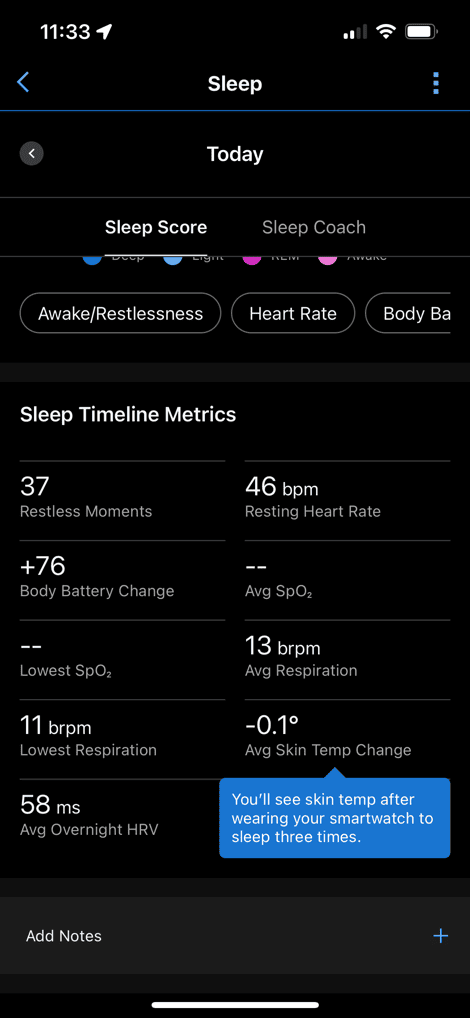

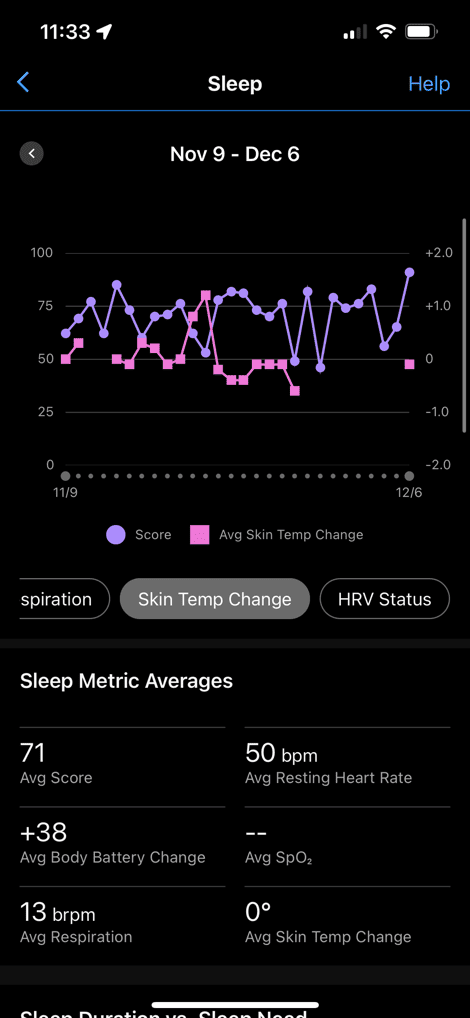
Above, you’ll see it ended on my chart in mid-late November, when I switched to a different watch that didn’t have this particular beta firmware on it. Once I upgrade that watch to the new production firmware, then after 3 nights, it’ll resume my sleep wrist temperature data.
Here you can see a more complete and comprehensive image of the data on my wife’s Fenix 7 Pro, as she wasn’t off switching/flirting with other watches constantly:
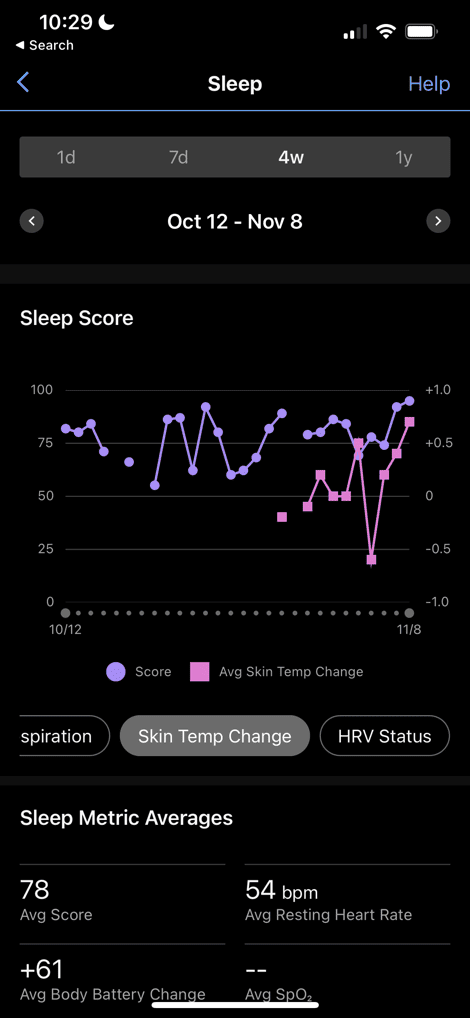
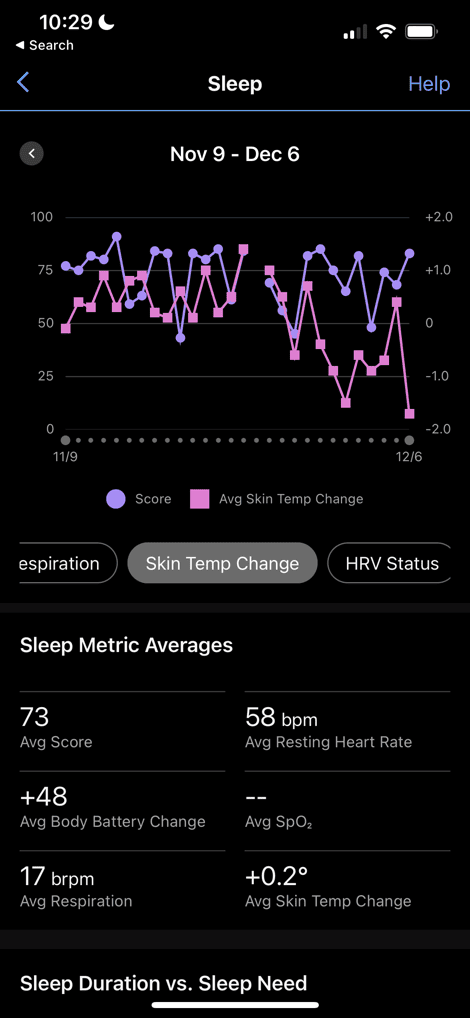
Garmin says that they currently baseline the temperature data 20-days back, thus, if you (smartly) move from a cold place in winter like Norway to a tropical island like Tahiti, it’ll take about 20 days to re-adjust your baseline. Additionally, this data isn’t shown anywhere on the device itself, only on the app.
Is This Data Useful?
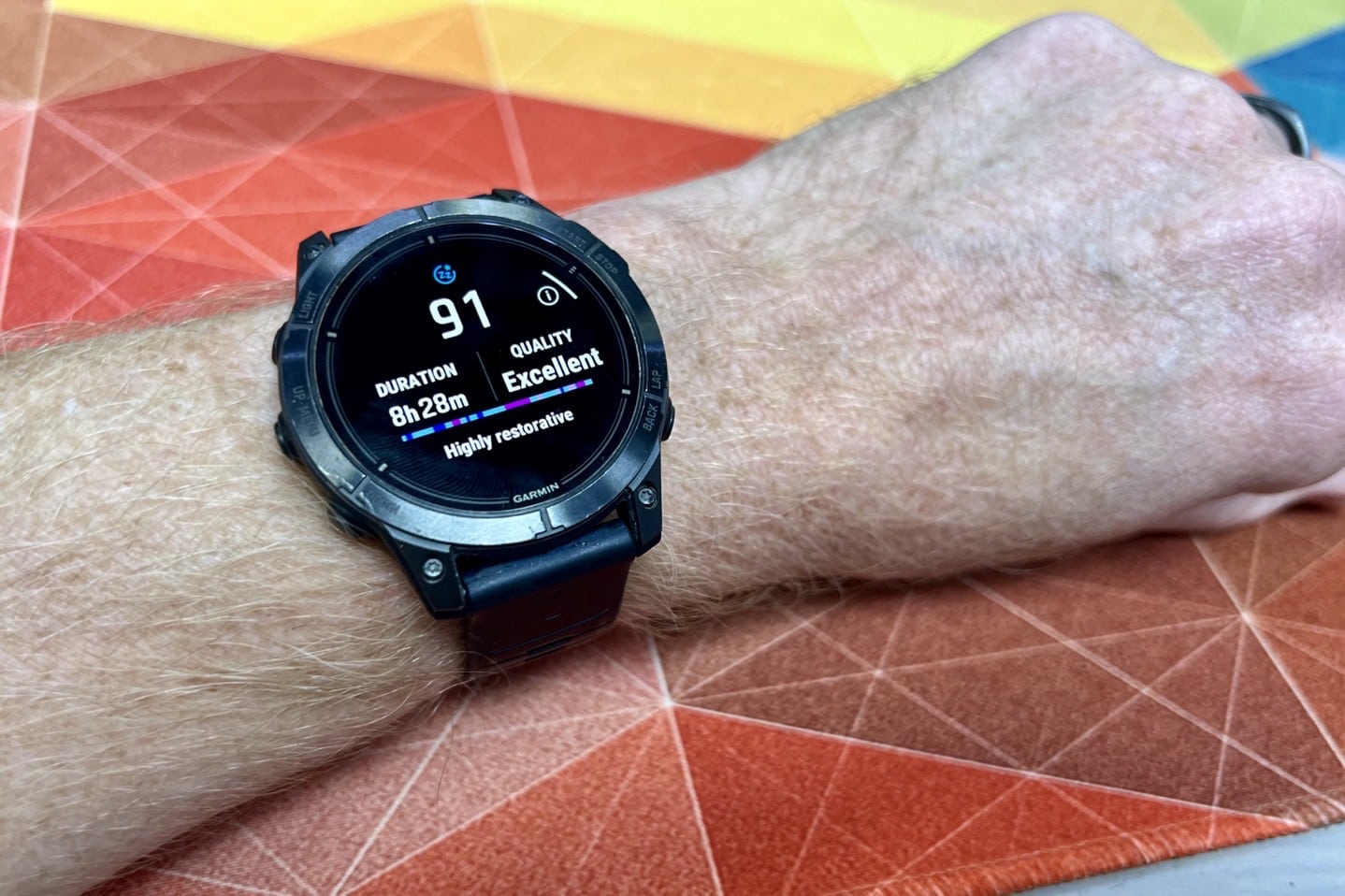
Now, the better question is whether this data is useful. And at the present with Garmin’s implementation, the answer is mostly ‘today, not really’. At least not yet. See, the primary use case for skin/wrist temperature data today from most companies is fertility focused, typically around ovulation cycle prediction. We’ve seen Whoop and Oura doing this for quite a while now, and generally speaking, with scary accuracy levels, even for irregular cycles.
However, watch makers have been more hesitant. For example, Apple introduced skin temperature data in Fall 2022 with the Apple Watch Series 8/Ultra, however, they don’t do forward-looking period prediction. Instead, they just do it historically (looking back at your data and figuring out your cycles there). Whereas Whoop/Oura do it forward-looking.
The next challenge with this type of data is it’s highly influenced by environmental factors. Specifically the temperature of the room your in, and even how much your burrow yourself in your sheets. Simply put, if you’re in a chilly winter bedroom the values will show colder than a hot sweaty tent in summer. But of course, those differences no different than a hotel room heated differently during a vacation.
Today, Garmin hasn’t yet implemented sensor-driven period prediction. It’s true that Garmin has period prediction features, but they’re based entirely on you manually logging data/symptoms, not on skin/wrist temperature data. So while company has long been a leader when it comes to female health tracking and the metrics and features, in the last 1-2 years, that’s been slipping a bit. Still, the new Gen5 sensor and this new wrist temperature tracking should hopefully put them in a position to start leveraging that data. And my guess would be that they’ll have the data sets quickly as this firmware update rolls out, to be able to move fast on that – especially cross-referencing to the cycle tracking data women are already logging in Garmin Connect.
As for other uses, there’s certainly been some looking at how the data can mesh with sickness, but again, environmental factors (again including how much you burrow in sheets when sick) can be really hard to mitigate data-wise. Likewise, while studies have shown how there are very slight shifts in body temperature between different sleep phases, most of those studies are done in highly regulated environments, rather than the wild blue yonder of a Holiday Inn or tent in the wilderness. Thus, sifting through that level of noise in the real world is significantly trickier.
As always though, many things are baby steps. With that, thanks for reading!


0 Commentaires